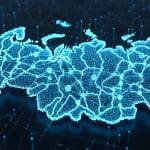Quantum force sensing, a technology that detects minute changes in physical quantities, has been enhanced by machine learning, according to researchers Tangyou Huang, Zhongcheng Yu, Zhongyi Ni, Xiaoji Zhou, and Xiaopeng Li. The team used a data-driven approach called digital twinning to significantly improve weak-signal detection sensitivity. Despite challenges in practical implementation, the integration of machine learning into quantum force sensing has broadened its applicability and enhanced its sensitivity. The technology has potential applications in precision navigation, gravity detection, and dark matter searches.
What is Quantum Force Sensing and How Does it Work?
Quantum force sensing is a cutting-edge technology that leverages quantum resources to detect subtle changes in physical quantities such as time, force, and electromagnetic fields. This technology provides extreme precision at the atomic scale, making it a vital tool in scientific discoveries and technological applications. Over the past few decades, quantum technologies have made remarkable strides, culminating in the emergence of quantum sensing techniques that enable high-precision detection at the microscopic level.
Quantum sensing has been successfully implemented across diverse platforms, including cold atoms, superconducting circuits, and solid-state spin systems. Recent advancements in quantum sensing highlight its potential for real-world applications such as precision navigation, gravity detection, and dark matter searches. However, these implementations often face challenges associated with both hardware setup and software processing, limiting their practical applications.
While hardware upgrades have demonstrated the capability to enhance sensing performance, software approaches like information compilation and data analysis offer an alternative path to improve the sensitivity of high-precision detection. This is where the concept of digital twinning comes into play.
What is Digital Twinning and How Does it Enhance Quantum Force Sensing?
Digital twinning is a data-driven approach that harnesses the capabilities of machine learning to significantly augment weak-signal detection sensitivity. In an atomic force sensor, this method combines a digital replica of force-free data with an anomaly detection technique. This approach does not require any prior knowledge about the physical system or assumptions regarding the sensing process.
The researchers, Tangyou Huang, Zhongcheng Yu, Zhongyi Ni, Xiaoji Zhou, and Xiaopeng Li, propose this entirely data-driven approach to enhance the sensitivity of quantum force sensing. Their findings demonstrate a significant advancement in sensitivity, achieving an order of magnitude improvement over conventional protocols in detecting a weak force of approximately 10^-25N.
The resulting sensitivity reaches 17(4)10^-25N/√Hz. This machine learning-based signal processing approach does not rely on system-specific details or processed signals, rendering it highly applicable to sensing technologies across various domains.
What are the Practical Challenges in Implementing Quantum Force Sensing?
Despite the promising advancements in quantum force sensing, their practical implementation remains challenging due to rigorous technological requirements. Intriguing methods utilizing collective many-body correlations and quantum entanglements have been developed in physics to enhance sensitivity. However, these methods require a high level of technological sophistication to implement, which can be a barrier to their widespread use.
Moreover, the practical applications of quantum sensing are often limited by challenges associated with both hardware setup and software processing. While hardware upgrades can enhance sensing performance, they can also be costly and complex to implement. On the other hand, software approaches like information compilation and data analysis require sophisticated algorithms and computational resources.
How Does Machine Learning Augment Quantum Force Sensing?
Machine learning offers a promising solution to these challenges. By harnessing the capabilities of machine learning, researchers can significantly augment weak-signal detection sensitivity in quantum force sensing. This approach involves creating a digital replica of force-free data and using an anomaly detection technique to identify subtle changes in the data.
This machine learning-based signal processing approach does not rely on system-specific details or processed signals. This makes it highly applicable to sensing technologies across various domains, as it can be adapted to different systems and signals. Moreover, this approach does not require any prior knowledge about the physical system or assumptions regarding the sensing process, making it a flexible and versatile tool for enhancing quantum force sensing.
What are the Potential Applications of Quantum Force Sensing?
Quantum force sensing has a wide range of potential applications in both scientific research and practical technology. Its ability to detect subtle changes in physical quantities with extreme precision makes it a valuable tool for precision navigation, gravity detection, and dark matter searches.
In the field of precision navigation, quantum force sensing can provide highly accurate measurements of time and space, enabling precise positioning and navigation. In gravity detection, it can detect subtle changes in gravitational fields, providing valuable data for geophysical research and exploration. In the search for dark matter, quantum force sensing can detect the weak forces exerted by dark matter particles, providing crucial evidence for the existence of this elusive substance.
What is the Future of Quantum Force Sensing?
The future of quantum force sensing looks promising, with ongoing research and development aimed at overcoming the current challenges and expanding its potential applications. The integration of machine learning into quantum force sensing represents a significant advancement in this field, offering a powerful tool for enhancing sensitivity and broadening the applicability of this technology.
As researchers continue to refine this machine learning-based approach, we can expect to see further improvements in the sensitivity and versatility of quantum force sensing. This will open up new possibilities for scientific discoveries and technological applications, from precision navigation and gravity detection to dark matter searches and beyond.
In conclusion, quantum force sensing is a cutting-edge technology with vast potential for scientific and technological applications. The integration of machine learning into this technology represents a significant advancement, offering a powerful tool for enhancing sensitivity and broadening its applicability. As research and development in this field continue, we can look forward to a future where quantum force sensing plays a vital role in our understanding and manipulation of the physical world.
Publication details: “Quantum force sensing by digital twinning of atomic Bose-Einstein condensates”
Publication Date: 2024-06-01
Authors: Tangyou Huang, Zhentao Yu, Zhongyi Ni, Xiaoji Zhou, et al.
Source: Communications physics
DOI: https://doi.org/10.1038/s42005-024-01662-1




